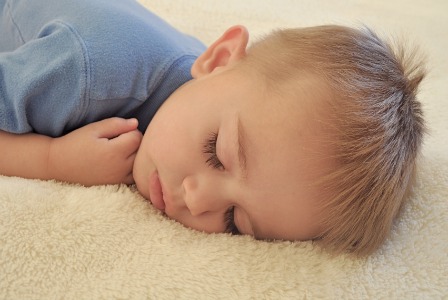
One in 25 children will have a febrile seizure before age 5. However, most parents are ill equipped with both basic seizure knowledge and first aid leaving them panicked in the event of a seizure and full of questions in its aftermath.
febrile seizure Facts, risks and first aid
While febrile seizures are fairly common and often benign, witnessing one in an infant or toddler is a traumatic experience for a parent. Armed with basic seizure facts and first-aid knowledge, you can keep a calm head in the event of a febrile seizure.
Febrile seizure facts
Febrile seizures are convulsions that occur in children from birth to age 5 and are most common in toddlers. The term “febrile” actually means “feverish.” These seizures are triggered by a rapid increase in body temperature and associated with a febrile illness. Children typically present with a fever of 102 rectally though these seizures may occur before a parent even knows the child is ill.
A seizure is characterized by loss of consciousness, shaking and moving or twitching of limbs on one or both sides of the body. The child may also become rigid or have twitches in only one portion of the body. Most febrile seizures have a duration of a minute or two, though some can last as little as a few seconds to more than 15 minutes.
Are febrile seizures harmful?
The vast majority of febrile seizures, while certainly scary, are harmless. There is no evidence that brief febrile seizures cause brain damage or death. Most children have no long-term risk of disabilities or complications to future learning and recover completely from the episode.
Risk factors
Febrile seizures are, for the most part, unpreventable and can occur in any young child with fever. However, there seem to be factors that may contribute to an increased risk for recurrent febrile seizures. These include: Having the initial seizure younger than 15 months, frequent fevers, a family history of febrile seizures or presence of a developmental disability.
Does this mean epilepsy?
Two-thirds of children will never have another seizure after their first. Though febrile seizures may reoccur in up to one-third of children, this propensity is typically outgrown by age 5 and rarely are there any neurological side effects. Only 2 percent to 5 percent of children who experienced a febrile seizure in childhood are diagnosed with epilepsy.
First aid for seizures
- Stay calm. Though seizures are frightening to observe, staying calm is essential.
- Watch the clock. Note the start and end time of the seizure and record its duration.
- Monitor safety. Be sure to protect the child . However, never restrain or prevent a child’s movements during convulsions by trying to hold their limbs or body still.
- Nothing in the mouth! It is a misnomer that a child will “choke on their tongue” and an object in the mouth will cause much more harm.
- Keep left. It is possible to aspirate on saliva or vomit during a seizure, so carefully roll the child to their left side.
- Call 911 if... the seizure continues past five minutes and/or the child has difficulty breathing.
After the first febrile seizure, a child should be seen by a doctor immediately for consultation, illness treatment and recommendations. Your doctor will be able to discuss the need for follow-up with specialists, neurological tests and any other next steps if necessary.
Parents can find more resources from the Epilepsy Foundation and the National Institute of Neurological Disorders and Stroke febrile seizures information page.
More about kids' health
Do kids with food allergies inconvenience “normal” kids?
Parents terrified of becoming Adam Lanza's mother
Challenges of parenting a child with diabetes